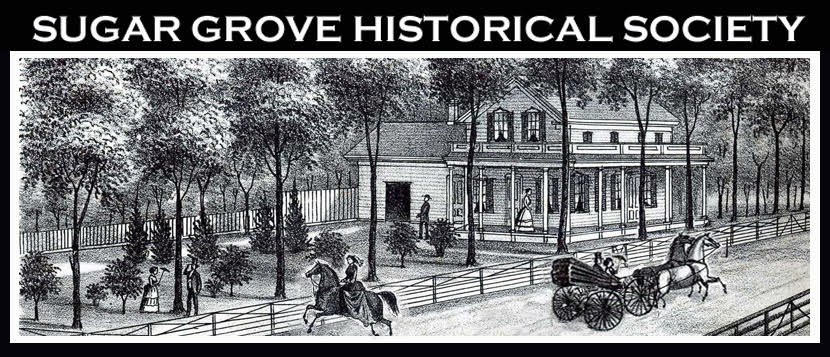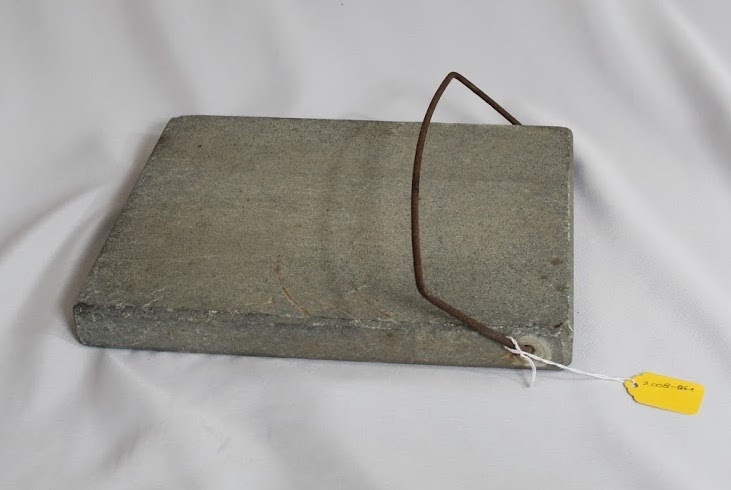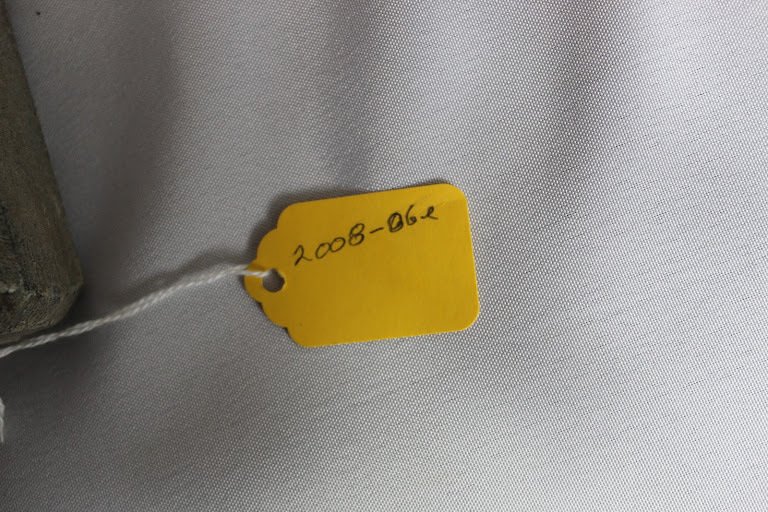Dublin Core
Title
Soapstone Buggy/Foot Warmer
Subject
[no text]
Description
The soapstone buggy/foot warmer was used by many people to warm their beds at night and oftentimes would be used to warm their feet while out and about in a sleigh or buggy. The soapstone bed warmer was in favor in the mid-1800s and gradually grew out of favor around the turn of the century.
What exactly is soapstone? In its purest form, soapstone is talc. Yes, the same stone is used to make baby powder. Talc is what gives the stone the characteristic greasy feel for which it is named. Based on the percentage of talc in the stone it could be used for a variety of things. As far back as ancient Egypt, soapstone was used carving scarabs. Native Americans understood that soapstone holds heat extremely well; they carved bowls out of it and cooked food in them.
The heat conductivity of the stone is what made it popular. The stone was so dense that it was able to retain and radiate heat. Most metals absorb heat from the fire and then release it rapidly. Soapstone releases heat very slowly. Another point in its favor versus other stones is that some stones when heated repeatedly will crack and break. Soapstone, with its density, can be reheated over and over with no damage to itself.
The soapstone foot warmers were simply placed near the fire before bedtime and allowed to heat up. They were heated to the point that they could be touched to pick up, but not be able to be held for any length of time. The stone could then be rubbed along the entire mattress to warm it up and then the stone was usually wrapped in a cloth and put at the foot of the bed for a continued slow release of heat throughout the night.
Source of Description: https://www.tribstar.com/features/history/historical-treasure-soapstone-foot-bed-warmers-popular-in-1800s/article_0849c981-4f15-5471-be0f-08ff156953c7.html
What exactly is soapstone? In its purest form, soapstone is talc. Yes, the same stone is used to make baby powder. Talc is what gives the stone the characteristic greasy feel for which it is named. Based on the percentage of talc in the stone it could be used for a variety of things. As far back as ancient Egypt, soapstone was used carving scarabs. Native Americans understood that soapstone holds heat extremely well; they carved bowls out of it and cooked food in them.
The heat conductivity of the stone is what made it popular. The stone was so dense that it was able to retain and radiate heat. Most metals absorb heat from the fire and then release it rapidly. Soapstone releases heat very slowly. Another point in its favor versus other stones is that some stones when heated repeatedly will crack and break. Soapstone, with its density, can be reheated over and over with no damage to itself.
The soapstone foot warmers were simply placed near the fire before bedtime and allowed to heat up. They were heated to the point that they could be touched to pick up, but not be able to be held for any length of time. The stone could then be rubbed along the entire mattress to warm it up and then the stone was usually wrapped in a cloth and put at the foot of the bed for a continued slow release of heat throughout the night.
Source of Description: https://www.tribstar.com/features/history/historical-treasure-soapstone-foot-bed-warmers-popular-in-1800s/article_0849c981-4f15-5471-be0f-08ff156953c7.html
Identifier
2008-06e (Accession Number)
Date
[no text]
Creator
Aeryn
Language
[no text]
Rights
[no text]
Format
[no text]
Relation
[no text]
Source
[no text]
Publisher
[no text]
Contributor
[no text]
Type
[no text]
Coverage
[no text]


